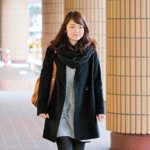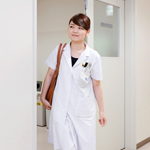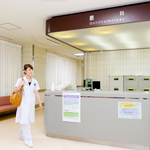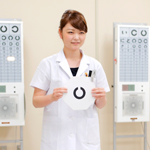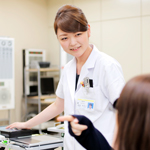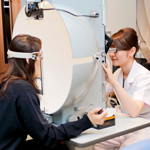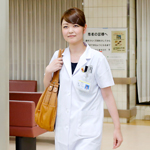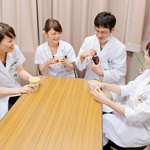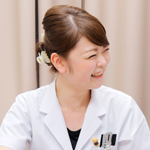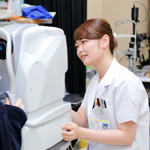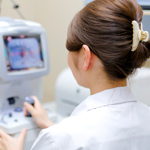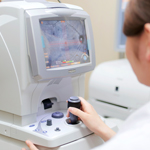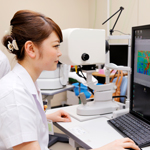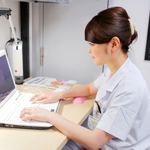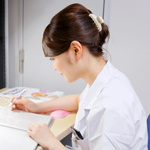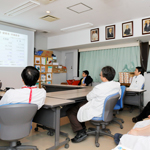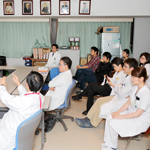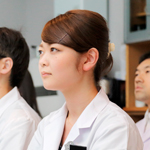
-
School of Medicine
-
Educational Content
-
Prospective Students
-
Current Students and Alumni
International Affairs

-
Graduate School of Medicine
-
Educational Content
-
Prospective Students
-
International Affairs

-
Graduate School of Biomedical Science and Engineering
-
Educational Content
-
Prospective Students
-
Other

-
Faculty of Medicine
-
Organizational Structure
-
Industry-academia Cooperative Projects

-
Overview
-
Entrance Examinations
-
Publications and Promotional Material
-
Various Types of Data
A day for Kiriko Hirooka (Doctoral Program)
- HOME
- Graduate School of Medicine
- Daily activities of students of the graduate school
- A day for Kiriko Hirooka (Doctoral Program)
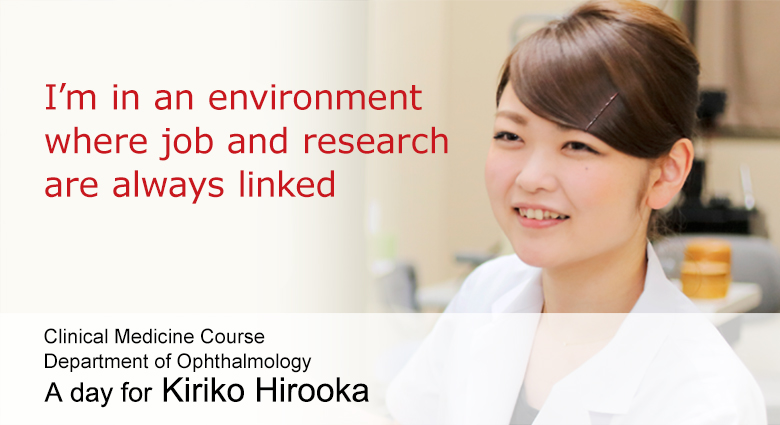
Click the image to enlarge it.

Arriving at the hospital
Starting outpatient care
I’m in charge of some of the examinations related to ophthalmic care including examinations of eyesight, perimetry, eyeground photographying, and visual function training for strabismus and amblyopia. Each of the examinations I am in charge of is very important for physicians to diagnose illnesses. This is the fifth year since I started work at this hospital after qualifying for the national orthoptist licence. Up to last year I was in the Master’s Program of the Graduate School of Medicine.
The eyeball is a very small organ of approximately 2 cm in diameter, but it is complicated.
We perform the various examinations and obtain different results depending on the place, type, and condition of illnesses. At the outpatient clinic we are equipped for a variety of examinations. The examinations let us know about the condition of the eyes of patients before the physicians.
Lunch
After finishing the outpatient care in the morning, there is the lunch break. Talking with other staff, it is a refreshing time. It is important not to use your eyes too much to keep them healthy and stay well. I also try to rest my eyes from time to time by avoiding using the computer continuously for long periods of time.
Resuming outpatient care
We are eleven orthoptists assigned to do examinations. To attend the graduate school and acquire credits while working as an orthoptist I have to apply for leave from the hospital for the time slots where I have lectures.
I have been reliably supported by other orthoptists and ophthalmology staff. Engagement in both the study of the master’s program and the outpatient assignments has made it possible for me to apply what I have learned in the study and research in the examinations I do for patients. This experience is useful in instructing my juniors, and I am happy when I can instruct them efficiently.
At the lab
After finishing outpatient care, I become a student. Attending the lab, I am engaged in the analysis of test data and writing of papers under the theme that covers the circulation dynamics and morphological changes of the retina and choroid coat.
When I need advice, I consult with my tutor and seniors in the lab. I’m in a very enthusiastic team and I learn a lot from even short discussions with them.
Conferences and Meetings
We have research conference every Monday where we learn the latest knowledge mainly about research, and there is a clinical conference every Wednesday where we discuss medical examinations and treatment plans for specific cases. At the monthly clinical research meeting, we report on the progress of research and papers, and receive useful advice. As a student of the doctoral program I learn something all the time, surrounded by staff who generously provide advice for my research.
The Graduate School of Medicine is an ideal place for me as work and research are always linked because I can perform examinations of patients during the outpatient service and analyze the results as part of my clinical research, making good use of my position as an orthoptist.
I am leading a fulfilling life everyday with the hope that someday in the future my research efforts will contribute to practice in clinical settings.
(Interviewed in December 2013, updated June 2015)
Webpage of the Department of Ophthalmology which this graduate school student belonged to


